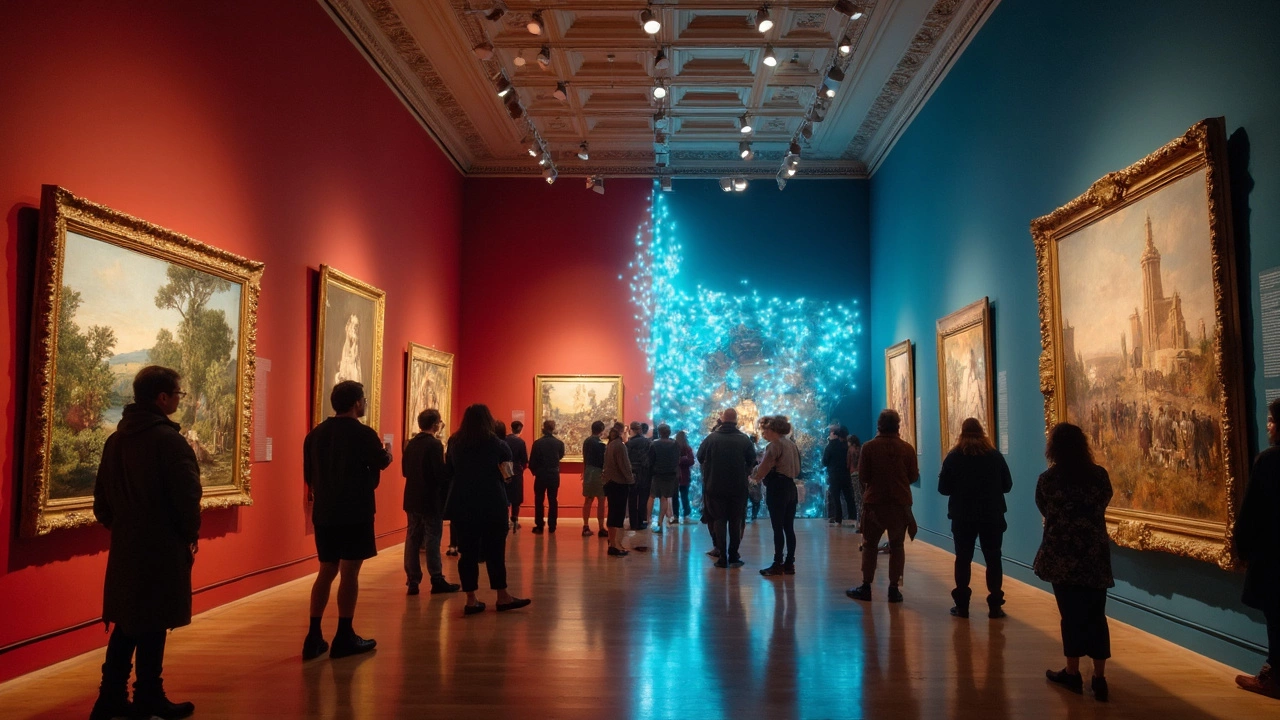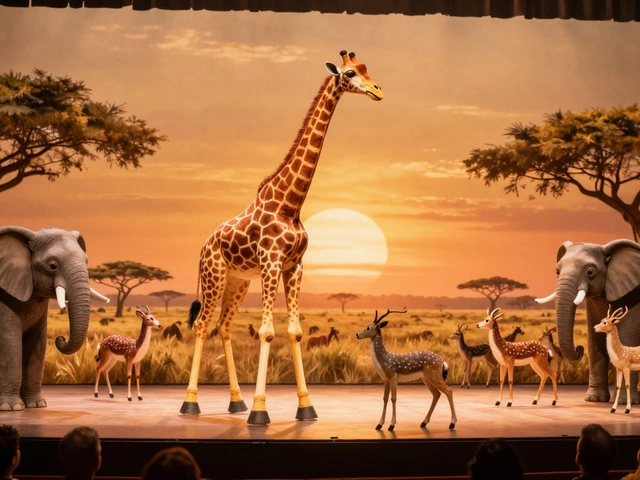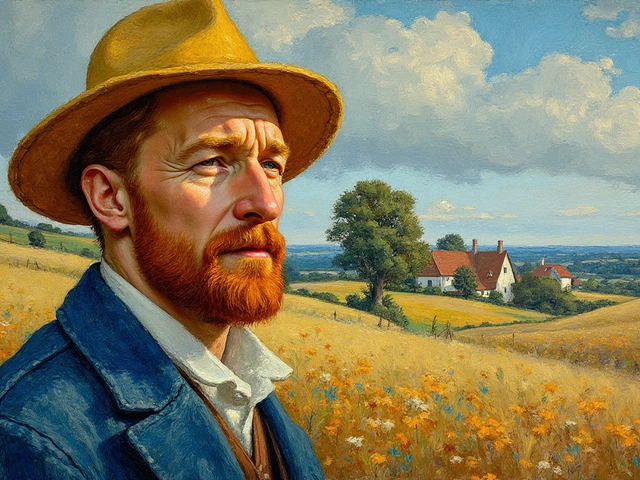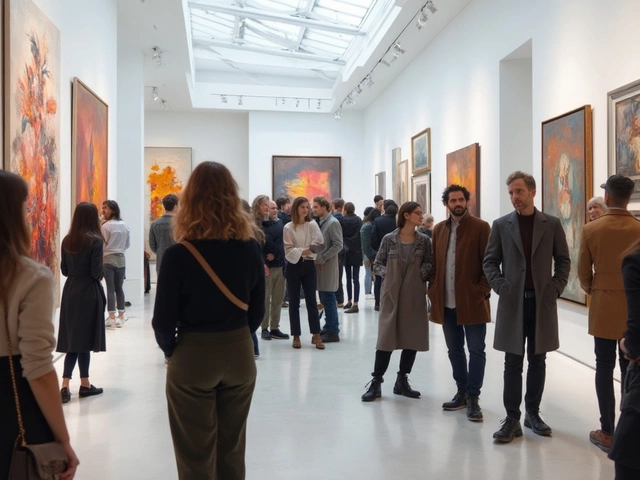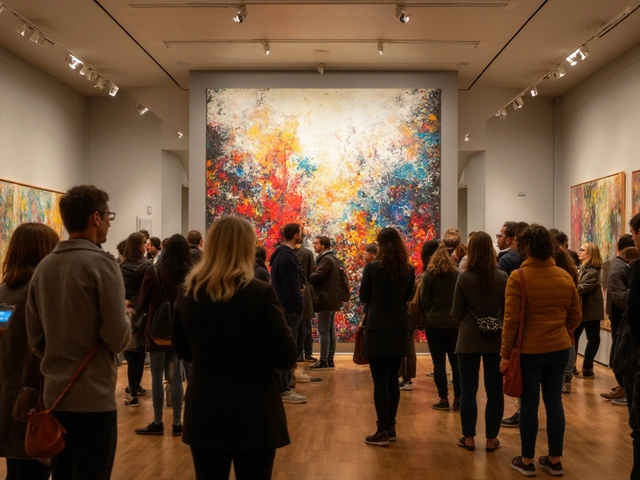Ever walked into a museum and felt lost staring at a big splash of color, wondering how it's even called art? Or maybe you've seen a lifelike painting and thought, "Now, that's real skill." Traditional art and contemporary art both get people talking, sometimes even arguing. But what actually makes them different?
Here's the thing—traditional art is all about the old-school ways. Think oil paintings, marble sculptures, detailed sketches. Artists used methods passed down for hundreds of years. The big goal? To represent the world accurately and show off skill. On the flip side, contemporary art breaks rules like they're made of glass. It's not just about pretty shapes or how good the brushwork is. It's about ideas, questions, and sometimes even strong opinions wrapped up in paint, video, or random objects.
- Defining Traditional Art
- What Sets Contemporary Art Apart
- How Context Changes Everything
- Tips for Enjoying and Collecting Both
Defining Traditional Art
When people talk about traditional art, they usually mean the types of art that have deep roots—stuff like painting, drawing, sculpture, and ceramics. These art forms go back to ancient times and involve methods you can track through history. You see them in old churches, castles, temples, and even in textbooks. Traditional artists worked mostly with materials like canvas, wood, stone, and metal. They used tools like brushes, chisels, pencils, and paint, following methods passed down from teacher to student. You can think of it as art with a playbook that everyone knew and respected.
One of the big goals of traditional art is to represent things clearly and skillfully. Whether someone painted a king’s portrait or carved a religious statue, the focus was on detail, accuracy, and technical skill. Most traditional art is about showing what the world looked like or telling a story everyone could recognize.
- Oil painting existed as early as the 15th century in Europe and still gets attention for its layered, rich look.
- Famous works, like the Mona Lisa or Michelangelo’s David, are textbook examples of traditional art’s high standards.
- Even folk art, from quilts to masks, fits here when it sticks to local customs and styles passed down through families or regions.
Fun fact: A lot of those realistic portraits from the 1700s took months, sometimes years, to finish. Artists often had teams—apprentices would paint the backgrounds or details, while the master focused on faces and hands.
You’ll also notice that traditional art comes with its own set of “rules.” Realism, balance, and perspective mattered a lot. If a painter messed up anatomy or perspective, people noticed, and critics weren’t shy about it. These rules made it easy to judge which artists stood out and which didn’t.
This doesn’t mean all old art looks the same. Cultures from all over the world had unique styles, like Japanese woodblock prints or African masks. But in every case, the art worked inside a known style, with clear expectations about what “good art” looked like.
What Sets Contemporary Art Apart
If you think contemporary art is just random stuff glued together, there’s a lot more going on under the hood. First off, it’s all about ideas—sometimes even more than the final product. Artists today aren’t settled on making lifelike portraits or perfect landscapes. They care about making you think, or maybe even laugh, worry, or get annoyed. One day it could be a giant mural spray-painted on a wall, the next a video looping in a dark gallery. No rules, just pure expression.
Another big difference: materials. In the contemporary art world, anything goes. Artists use metal scraps, plastic bottles, neon lights, and even social media posts. Famous example: Maurizio Cattelan’s banana duct-taped to a wall sold for $120,000 at Art Basel Miami in 2019. Not everyone understood it, but it got people talking, which is kind of the point.
Context matters more than ever. When artists make something today, it often connects to a social issue or reflects what’s going on in the world. Themes like climate change, politics, identity, and mental health pop up everywhere. You might find paintings that highlight discrimination or installations attacking pollution—art trying to push for change, not just look pretty.
Here’s a snapshot of how contemporary art compares with traditional art in a few key ways:
| Feature | Traditional Art | Contemporary Art |
|---|---|---|
| Main Focus | Skill, beauty, tradition | Ideas, message, concept |
| Materials | Paint, clay, canvas | Anything—waste, tech, food, digital |
| Style Limits | Sticks to rules and known styles | No limits, mix of styles or none at all |
| Audience Reaction | Aim for admiration | Aim for reaction (good or bad) |
If you’re thinking about getting into contemporary art, keep your mind open and ditch the idea of there being a right or wrong way to “get it.” The whole point is to get you thinking—or maybe just wondering what on earth the artist was thinking.
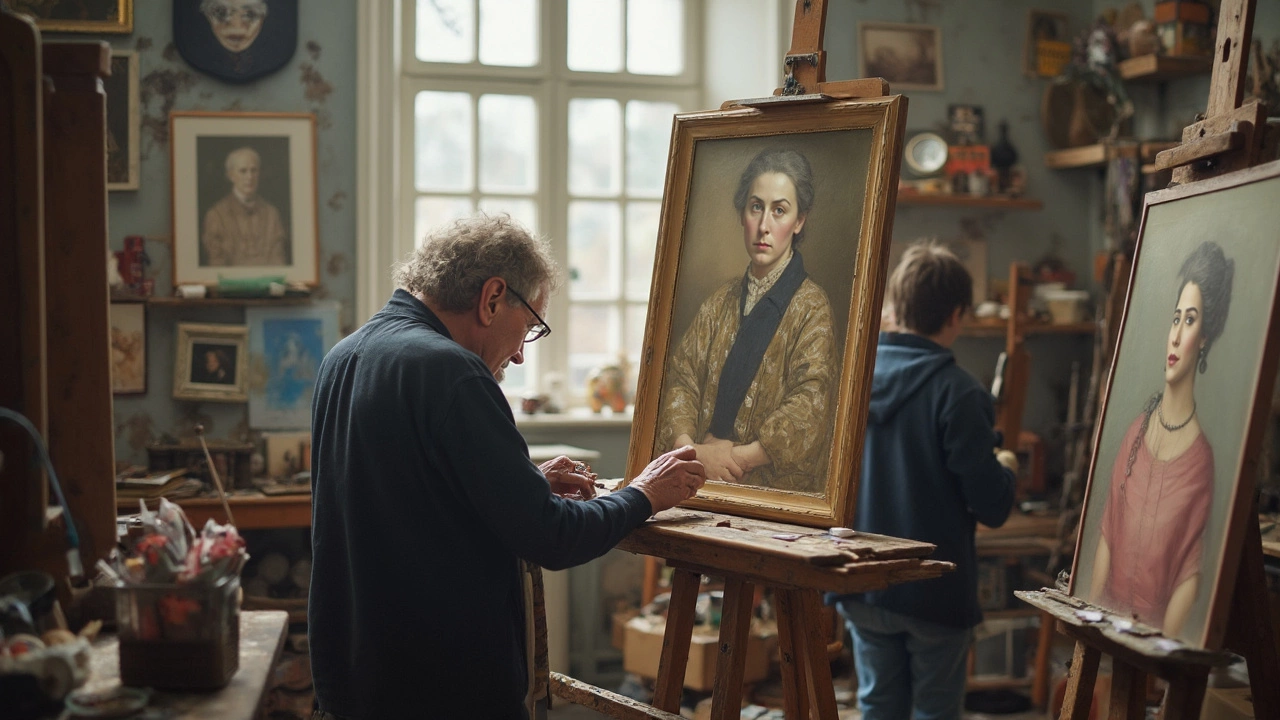
How Context Changes Everything
When it comes to traditional art and contemporary art, context is the game changer. Pick up a Renaissance sculpture and you'll see it was all about religion, tradition, and impressing the powers that be. Churches and local rulers called the shots, and artists followed those expectations. The result? Art that reflected what society valued at the time: faith, power, and order.
Fast forward to today and contemporary art has an entirely different vibe. Context here is about the world we live in—politics, tech, identity, and even memes can shape what artists create. There are no kings or church leaders commissioning most of the work anymore. Now, artists respond to current events and popular culture, and some even turn art into a form of protest. When you see a sculpture made of trash or a painting full of bright chaos, it's not random. The artist is saying something about the world now, not just showing off technical skill.
Here’s something plenty of folks don’t realize—two artists can make a similar looking painting, but the reasons behind them might be totally different. The Mona Lisa? That was made to show off detail and technique for a wealthy client. A modern portrait with wild colors and a sad face? That could be pushing you to think about mental health, race, or what it means to be “normal.”
Check out this real-world difference between traditional art and contemporary art:
| Traditional Art | Contemporary Art |
|---|---|
| Made for royalty, religion, cultural tradition | Made to challenge ideas, reflect social issues |
| Focused on accuracy and skill | Focused on ideas and reactions |
| Artists commissioned by the elite | Artists create freely or for anyone |
Here’s a tip if you’re trying to understand a new piece of contemporary art: look up what was happening when the artist made it. You might find connections to headlines, big social movements, or personal stories. Art means more (and makes way more sense) when you know the context it came from.
Tips for Enjoying and Collecting Both
If you want to get the most out of traditional art and contemporary art, it helps to know what you’re looking at and why it matters. You don’t need an art degree to appreciate either type—just some basic know-how and curiosity.
- Take your time in front of the artwork. Sometimes first impressions can be misleading. With traditional paintings, look for details, technique, and storytelling. In contemporary works, search for clues in titles or wall texts, and don’t be afraid to guess the meaning.
- Ask questions—even the silly ones. If you’re visiting a gallery or museum, staff are usually happy to talk. Ask about the artist’s background, the time period, or why the piece is important. Questions open up surprising insights.
- Mix things up. Follow accounts or blogs that share both historical and new art. Getting exposed to wide styles makes it easier to notice patterns or spot what feels fresh.
- Start small if you want to collect. You don’t have to buy a Picasso or a Banksy. Limited edition prints or works from emerging artists can be affordable and sometimes skyrocket in value. Attend student art shows, online auctions, or community art fairs. You’ll support new talent and might discover something before the rest of the world does.
- Learn the basics about authenticity and provenance. For traditional art, authenticity checks—like certificates and trusted galleries—are crucial. With contemporary art, digital NFTs are another way of confirming originality. Always keep records of your purchases.
Art market stats from 2023 show that contemporary art made up about 16% of global art auction sales, while traditional art like old masters hovered around 7%. Both markets are vibrant, but contemporary art has more ups and downs. If you collect, stay updated on trends and talk to people in the scene.
| Art Type | Market Share (2023) |
|---|---|
| Contemporary Art | 16% |
| Traditional Art (Old Masters) | 7% |
No matter what you choose to enjoy or collect, listen to your gut. Trust what moves you instead of following hype. Art is personal. There’s no "right" answer—just what feels right to you.
